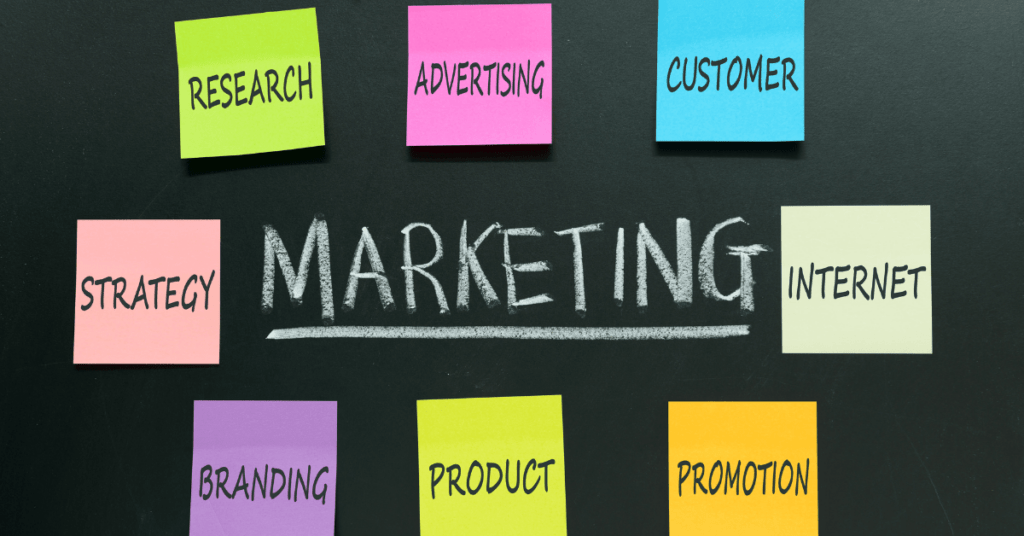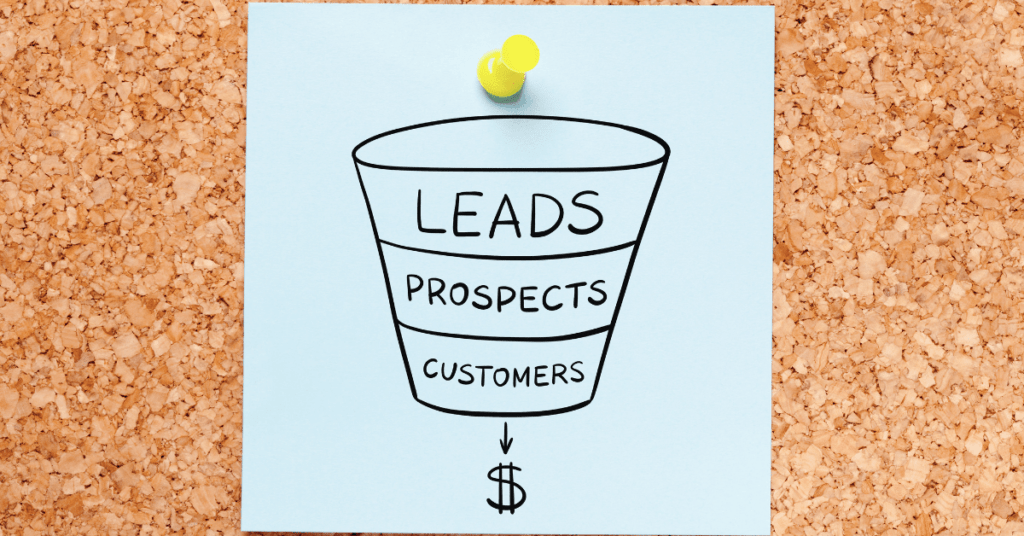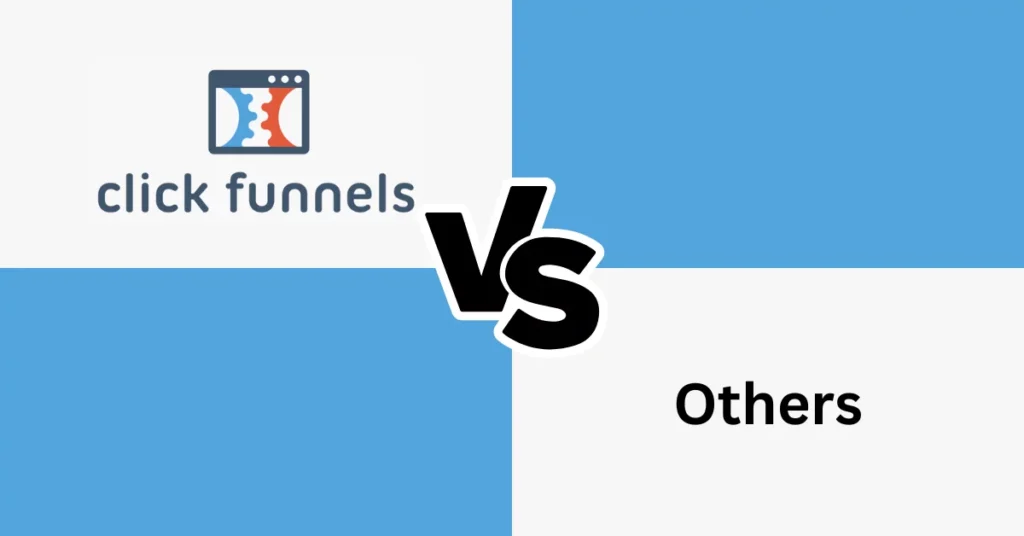Fail to plan, plan to fail. Many people fail even they have a plan on hand. What’s worse if you don’t have one? When it comes to digital marketing and getting traffic online, the competition is fierce. And you definitely need to create a marketing plan and follow it strictly to get success.
Let’s see what an eCommerce marketing plan should consist of and how to market your online business effectively.
What is a Marketing Plan

A marketing plan is a strategy a business uses to outline its marketing guide to show its products or services to more potential customers. It serves as a roadmap that guides an organization’s marketing activities, helping it to achieve its business objectives.
A well-written marketing plan should begin with a market analysis on the market size and the competition analysis to see who are the potential customers, where they hang out and what your competitors are doing.
After completing your market analysis, you should now craft your marketing plan. The marketing plan should be designed with specific, measurable, and achievable marketing goals. These goals should align with the overall business objectives and should be designed to support your business’s direction and growth.
A marketing plan should be reviewed regularly to update and optimize it based on the latest market trends and live data analysis to increase your conversion rate.
How to Create a Workable Marketing Plan
To create a marketing plan is easy if you have a guide to follow. Be sure that you include all the necessary elements in the marketing plan to get success.
1. Write an executive summary to Create Your Marketing Plan
The executive summary is the first part of a marketing plan. It’s the summary of the marketing plan that summarizes everything in it. Before someone is able to read the entire marketing plan, they can read the executive summary to understand your marketing plan.
In the executive summary, you need to include your business details, products or services offered, mission statement, marketing goals and your marketing budget and projections.
This includes information on the products or services that you are selling. Why do your potential customers want to buy from you and are there any competitors selling similar products or services?
Next, you need to identify what this marketing plan is about. What do you want to achieve with this marketing goal? It can be short-term and long-term business goals on either collecting more leads, selling more products or growing your business.
Finally, how much you are going to spend on marketing each year? And for the marketing fund spent, what is the return on investment? In business, for every single cent spent you should aim for a return. Worse case you should aim for breakeven on the marketing fund spent.
Although the executive summary is first on the list, it is the last component of your marketing plan. This is because in order to write the summary of your marketing plan, you need to first complete other contents in your marketing plan first.
2. Market Research
When you want to start selling something, you need to make sure that there is a market for it. And the best way to find out is to look at the market size and how your competitor is doing. For every success, there is a trend. As a good business owner, you don’t reinvent the wheel. Instead, look at the actual data to determine which products or services can earn the most.
While data won’t give you a foolproof plan, reducing the assumption in your marketing research will definitely increase the chances of your business success.
Start with the social media sponsored posts or ads and see what your competitors are buying ads for. If they are buying ads for a certain product or service for months and are still running ads, it’s a trend that it’s a good opportunity.
Then, look at the demographic of current buyers to determine the target customers that you want to focus on. This group of people is what you want to fully understand and focus on in your upcoming marketing campaign.
Finally, determine your strengths and weaknesses, and then identify your unique selling proposition (USP). Why do they need to buy from you and what is so special about your offering?
3. Craft Your Marketing Strategy
After knowing your products and target audiences, it’s time to create your marketing strategy. This means, where you want to market your product, how you want to market it, your message to your potential customers and your marketing budget.
We will explain each in detail below.
Marketing channels
To start your marketing, you need to first know where your target customers at. When you know your customers well, you will know where they hang out online. This includes how they look for the information, whether are they reading blogs, forums, social media groups or influencers they are following.
Other than the social media platform and search engine, you should also focus on another marketing strategy like email marketing or podcast. Email marketing is one of the digital marketing methods with the highest ROI. Once you build your email list and nurture them well, this is your private source of traffic. You can tap into the traffic anytime you want, and send your marketing message to them.
Not only that, those who subscribe to your email list are pre-filtered to be your potential customers. They already know you and your business. This makes them more likely to buy from you.
Another long-term marketing method would be podcasts. A podcast is your own show that you host. It can be an interview show with an expert in the industry, an info-sharing series, or a tips and tricks series. The key here is to provide value to your audiences and build a reputation as a thought leader in your industry.
Apart from the platform that you want to promote, you need to state also whether you are going to tackle the platform organically or with paid advertising. As most social media platform works as an advertising platform to monetize their platform, you can start buying ads from the platform your target customers at.
Paid Ads Marketing
When you are starting out, be careful of what you are doing with paid ads. Don’t overspend on your ads and scale too fast if you are not aware of what you are doing. In most cases, your marketing budget will run out too fast. Also, focus on one to two marketing channels first and then expand to the others when you dominate them.
The power of digital marketing lies in its algorithm. If you are able to follow the rules of the game, you can find a clue on how to get success in the marketing channel. But at the same time, you have limited control over the algorithm change. Any changes to the algorithm may result in your past efforts being useless.
Facebook, for example, you are getting almost zero organic reaches for new audiences. Or even your existing audience. This is because Facebook focuses on advertising reach. If you are buying ads from Facebook, your content will be shown to most audiences. And if not, your post will most probably not be shown at all.
Content Formats
Different marketing channels will have different content formats. This includes the content type, size, and word limits.
- Content type. The different content types will be used for different platforms. For example, on platforms like Pinterest and Instagram, images are definitely the go. And for Tiktok, Youtube, and Facebook, Video is the go. And for Twitter, word content is most important.
- Content Size. The display size for different platforms is different. For Pinterest and TikTok, it’s long content, while for Facebook and Pinterest, it’s square content. It is important to customize your content size based on the platform in order for it to display better.
- Written content. If you are doing content marketing, search engine ranking results is the best organic traffic. Either if you are building a blog, landing page or website, having your content structured based on the SEO algorithm’s favourite format will make it easier to rank.
The key here is to be consistent with your content creation and posting strategy. Your followers might be waiting for your next updates. The same goes for the platform’s algorithm. If you are not updating your content regularly, it will look like a dead zone.
Messaging
When you are building your brand online, you need to be consistent in your marketing language. This is your brand identity. And brand identity does not limit to your brand logo and colour only. But your messaging language is as well. If you are talking about different things or different views across different platforms, people will get confused.
This is where copywriting comes in. Your goal here is to use words to tell your potential buyers why they should buy from you. And why they should do it now. You can start thing by running a survey poll on your social media profile to see why people are following you and what they like about your brand.
Your product or service might be the best in the world. However, people don’t know about it if you don’t tell them. You need to show how good is your product on your sales page and social media content. And then, persuade them to buy without being pushy.
Knowing that people don’t buy because of the spec, but instead, with the benefits it brings and the problem it solves is more important. That’s why they decide to buy from you.
Marketing Budget
While you can run your marketing plan without spending much by posting on the social media platform and leveraging the organic traffic method, you will still need to spend to scale your business. There are several ways you need to spend for marketing.
First of all, you can buy ads from marketing platforms like Google, Facebook and TikTok to show your content to more people. This is effective if you know what you are doing and is targeting the right audiences. Else, you can look for an ads expert to run the ads for you.
Or you can also pay for sponsored posts or collaborations with influencers to share and review your products with their audiences.
Either way, the marketing funds should be the biggest spending for your business when you are starting out to create brand awareness. For instance, you can save your budget at other places but make sure you spend enough on marketing. This is how you grow your business.
Create Clear and Measurable Goals
When you are running your marketing plan, you want to make sure your marketing plan works and brings in profits to your business. Most often, we will measure this based on the return on investment(ROI) from your marketing effort. Ideally, for every dollar spent, you should need to get back at least 1 dollar to break even.
And anything after that will be pure profit. Ideally, everyone will be looking for 1000% or more in return. You should also set your own target. If your target ROI is 20%, you can use that as a benchmark to optimize your marketing campaign to make sure you are able to meet that.
It doesn’t matter what is your expected ROI, but you should always have the goal that you are working towards.
Some other measurable goals include brand awareness, website traffic, lead generation, and social media followers to get new people into your marketing funnel.
Now, let’s have a look at the different stages of a marketing funnel.
- TOFU (Top of the funnel)
- MOFU (Middle of the funnel)
- BOFU (Bottom of the funnel)

Top of the funnel (TOFU)
This is the entry point of your sales funnel. People at this stage don’t know about you and don’t know what you are selling. At this point, we call them a new lead. Typically, you use a lead funnel to bring in new leads to your sales funnel.
In your lead funnel, you can offer them something for free in exchange for their contact details. We call this freebie the lead magnet. Then run traffic from your chosen platform to the sales funnel.
In this stage, you need to know your ad’s clickthrough rate, page views count, conversion rate, click-through rate and cost per click. Make sure you split-test your lead funnel to increase the conversion rate.
Middle of the funnel (MOFU)
At this stage of the sales funnel, people are aware of the problem they are facing and need a solution to it. However, they are not sure which solution they need.
They are actively looking for a solution, but have yet to decide. You can use social media to target these people with search engines or retarget ads.
At this stage, you want to show them the benefit of your products and why should they be buying from you.
Bottom of the funnel (BOFU)
People at this stage are ready to buy. They just need the final push to pull the trigger. You can directly show them your best offer and hard sell them. They already know what they need, the solution available, and why they need to buy from you. You just need to push them to take action.
At this stage, you need to look at a few metrics such as add-to-cart rate, average order value, orders count, abandoned cart rate and sales conversion rate.
Follow-Up Funnel
After someone purchase from you, your relationship with them does not stop there. It is easier to get your existing customers to continue buying from you rather than converting new customers.
This is because they already know you and bought from you before. It is more likely for them to buy from you again if you serve them well. Not only that but to create a steady stream of income from your e-commerce business, you should always offer subscription service.
It can be a subscription for a service or accessing some content. Or a subscription box to fill up their supply weekly or monthly.
Tips to Create Your Marketing Plan
Now it’s your turn to create your marketing plan. But keep in mind that there are some tips and tricks that you can follow when creating your marketing plan.
Set Your Expectations
When creating your marketing plan, it should be something realistic. Only with a realistic plan, you will have the confidence to work on the plan. Not only that, if you set your expectation too high, you will end up with disappointments when things are not working up to expectations. High expectations often lead to disappointment when we fail to meet them.
This is why, you should always set the right expectations based on your current status. You can always change your expectations when you are growing. But you should always work according to your capability.
Learn From Historical Data
Data doesn’t lie. You can learn from the industry’s best practice data and also your own past performance data. Then, work on optimizing your marketing campaign until it converts best and your business is growing.
When you are working on 10,000 per month traffic level, set your goal to 50,000 instead. Don’t aim for 1 million traffic at this point. It is pointless as it is too far from you. Unless you are able to spend huge marketing funds to buy ads to reach millions of audiences, else it will rarely happen.
Start Small, Think Big – Create A Marketing Plan That Works
When you create your marketing plan, you need to be very clear about your business’s current status and what you want to achieve. It doesn’t necessary for you to start big, but you should definitely start it.
Only when you start, there is a chance for you to grow. No matter which marketing strategy you choose in your marketing plan, make sure that you work consistently towards your goal. You might not see huge success at first, but with perseverance and keep implementation and optimisation, you will find your way to success.

